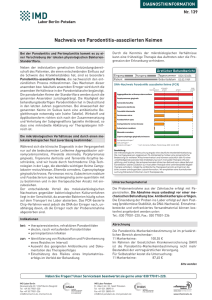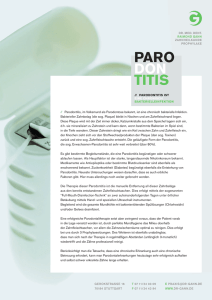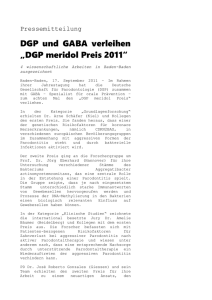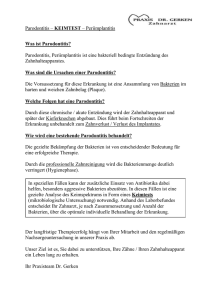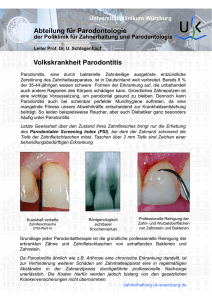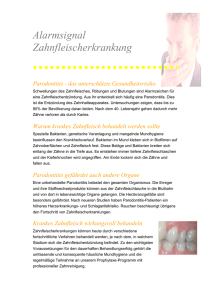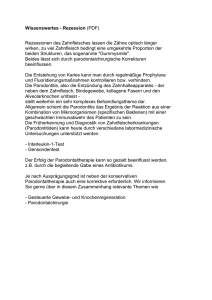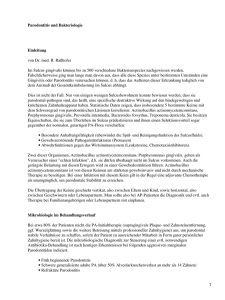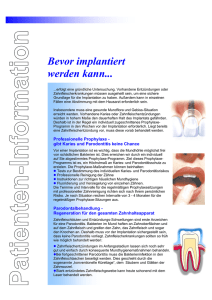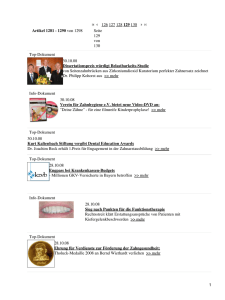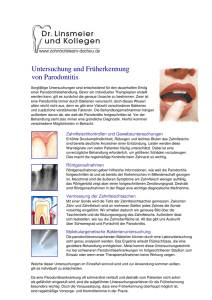PDF 82 kB - Dr. Ludin
Werbung
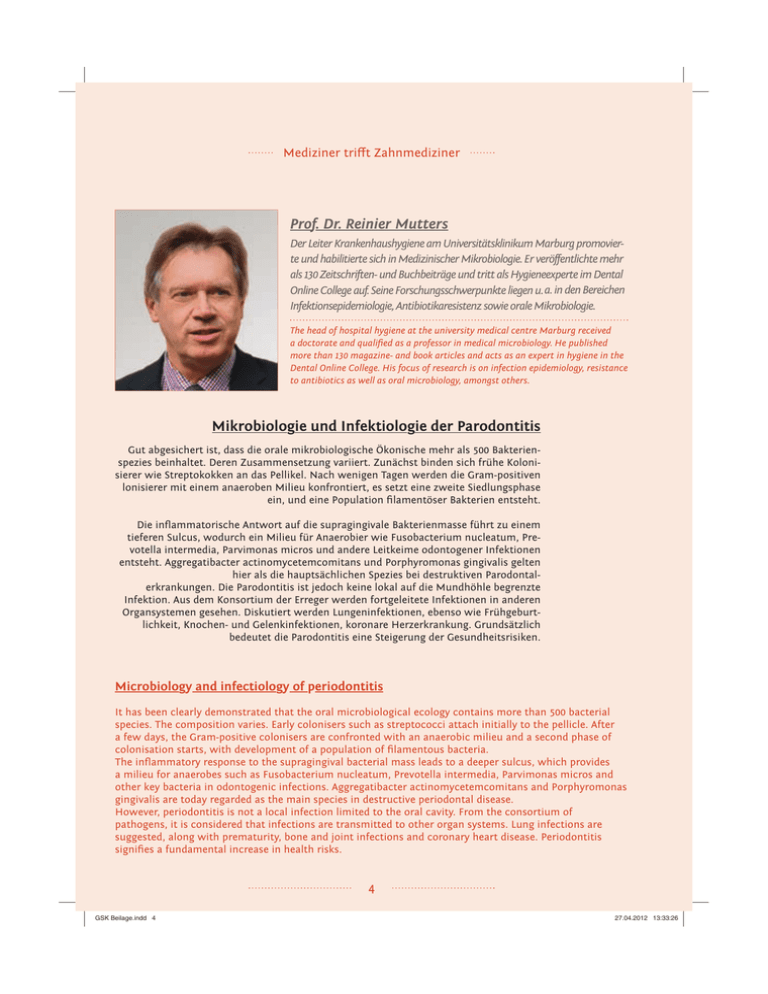
Mediziner trifft Zahnmediziner Prof. Dr. Reinier Mutters Der Leiter Krankenhaushygiene am Universitätsklinikum Marburg promovierte und habilitierte sich in Medizinischer Mikrobiologie. Er veröffentlichte mehr als 130 Zeitschriften- und Buchbeiträge und tritt als Hygieneexperte im Dental Online College auf. Seine Forschungsschwerpunkte liegen u. a. in den Bereichen Infektionsepidemiologie, Antibiotikaresistenz sowie orale Mikrobiologie. The head of hospital hygiene at the university medical centre Marburg received a doctorate and qualified as a professor in medical microbiology. He published more than 130 magazine- and book articles and acts as an expert in hygiene in the Dental Online College. His focus of research is on infection epidemiology, resistance to antibiotics as well as oral microbiology, amongst others. Mikrobiologie und Infektiologie der Parodontitis Gut abgesichert ist, dass die orale mikrobiologische Ökonische mehr als 500 Bakterienspezies beinhaltet. Deren Zusammensetzung variiert. Zunächst binden sich frühe Kolonisierer wie Streptokokken an das Pellikel. Nach wenigen Tagen werden die Gram-positiven lonisierer mit einem anaeroben Milieu konfrontiert, es setzt eine zweite Siedlungsphase ein, und eine Population filamentöser Bakterien entsteht. Die inflammatorische Antwort auf die supragingivale Bakterienmasse führt zu einem tieferen Sulcus, wodurch ein Milieu für Anaerobier wie Fusobacterium nucleatum, Prevotella intermedia, Parvimonas micros und andere Leitkeime odontogener Infektionen entsteht. Aggregatibacter actinomycetemcomitans und Porphyromonas gingivalis gelten hier als die hauptsächlichen Spezies bei destruktiven Parodontalerkrankungen. Die Parodontitis ist jedoch keine lokal auf die Mundhöhle begrenzte Infektion. Aus dem Konsortium der Erreger werden fortgeleitete Infektionen in anderen Organsystemen gesehen. Diskutiert werden Lungeninfektionen, ebenso wie Frühgeburtlichkeit, Knochen- und Gelenkinfektionen, koronare Herzerkrankung. Grundsätzlich bedeutet die Parodontitis eine Steigerung der Gesundheitsrisiken. Microbiology and infectiology of periodontitis It has been clearly demonstrated that the oral microbiological ecology contains more than 500 bacterial species. The composition varies. Early colonisers such as streptococci attach initially to the pellicle. After a few days, the Gram-positive colonisers are confronted with an anaerobic milieu and a second phase of colonisation starts, with development of a population of filamentous bacteria. The inflammatory response to the supragingival bacterial mass leads to a deeper sulcus, which provides a milieu for anaerobes such as Fusobacterium nucleatum, Prevotella intermedia, Parvimonas micros and other key bacteria in odontogenic infections. Aggregatibacter actinomycetemcomitans and Porphyromonas gingivalis are today regarded as the main species in destructive periodontal disease. However, periodontitis is not a local infection limited to the oral cavity. From the consortium of pathogens, it is considered that infections are transmitted to other organ systems. Lung infections are suggested, along with prematurity, bone and joint infections and coronary heart disease. Periodontitis signifies a fundamental increase in health risks. 4 GSK Beilage.indd 4 27.04.2012 13:33:26
